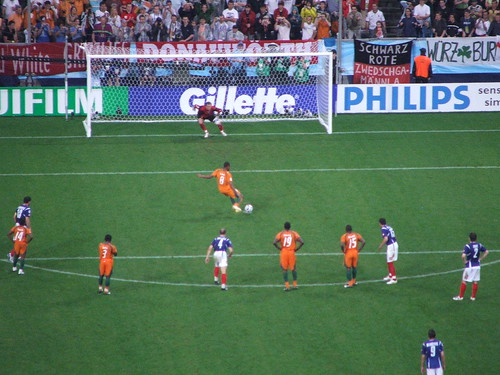Why Neuroeconomics Needs a Concept of (Natural) Rationality
The accumulation of evidence about the engagement of affective areas in decison-making is undisputable, and seems to make a strong case against a once pervasive “rationalist” vision of decision-making in cognitive science and economics. This is not, however, a definitive argument for emotivism (we choose with our "gut feelings") and irrationalism. For at least three reasons (methodological, empirical and conceptual), these findings should not be seen as supporting an emotivist account.
First, characterizing a brain area as “affective” or “emotional” is misleading. There is no clear distinction, in the brain, between affective and cognitive areas. For instance, the anterior insula is involved in disgust, but also in disbelief (Harris et al., 2007). A high-level task such as cognitive control (e.g. holding items in working memory in a goal-oriented task) requires both “affective” and “cognitive” areas (Pessoa, 2008). The affective/cognitive distinction is a folk-psychological one, not a reflection of brain anatomy and connectivity. There is a certain degree of specialization, but generally speaking any task recruits a wide arrays of areas, and each area is redeployed in many tasks. In complex being like us, so-called “affective” areas are never purely affective: they always contribute to higher-level cognition, such as logical reasoning (Houde & Tzourio-Mazoyer, 2003). Similarly, while the amygdala has been often described as a “fear center”, its function is much more complex, as it modulates emotional information, react to unexpected stimuli and is heavily recruited in visual attention, a “cognitive” function. It is therefore wrong to consider “affective” areas as small emotional agents that are happy or sad and make us happy of sad. Instead of employing folk-psychological categories, their functional contribution should be understood in computational terms: how they process signals, how information is routed between areas and how they affect behavior and thought.
Second, even if there are affective areas, they are always complemented or supplemented by “cognitive” ones: the dorsolateral prefrontal cortex (DLPFC) for instance (involved in cognitive control and goal maintenance), is recruited in almost all decision-making task, and has been shown to be involved in norm-compliant behavior and purchasing decisions. In the ultimatum game, beside the anterior insula, two other areas are recruited: the DLPFC and the anterior cingulate cortex (ACC), involved in cognitive conflict and emotional modulation. Explainiations of ultimatum decisions spell out neural information-processing mechanisms, not “emotions”.
Check for instance the neural circuitry involved in cognitive control: you would think it is only prefrontal areas, but as it turns out, "cognitive" and "affective" area sare required for this competence:
[Legend: This extended control circuit contains traditional control areas, such as the anterior cingulate cortex (ACC) and the lateral prefrontal cortex (LPFC), in addition to other areas commonly linked to affect (amygdala) and motivation (nucleus accumbens). Diffuse, modulatory effects are shown in green and originate from dopamine-rich neurons from the ventral tegmental area (VTA). The circuit highlights the cognitive–affective nature of executive control, in contrast to more purely cognitive-control proposals. Several connections are not shown to simplify the diagram. Line thickness indicates approximate connection strength. OFC, orbitofrontal cortex.From Pessoa, 2008]
As Michael Anderson pointed out in a series of papers (2007a and b, among others), there is many-to-many mapping between brain functions and cognitive functions. So the concept of "emotional areas" should be banned from neuroeconomics vocabulary before it is too late.
Third, a point that has been neglected by many research about decision-making neural activation of a particular brain area is always explanatory with regard to its contribution in understanding personal-level properties. If we learn that the anterior insula react to unfair offers, we are not singling out the function of this area, but explaining how the person’s decision is responsive to a particular type of valuation. The basic unit of analysis of decisions is not neurons, but judgments. We may study sub-judgmental (e.g. neural) mechanisms and how they contribute to judgment formation; or we may study supra-judgmental mechanisms (e.g. reasoning) and how they articulate judgments. Emotions, as long as they are understood as affective reactions, are not judgments: they either contribute to judgments or are construed as judgments. In both case, the category “emotions” seems superfluous for explaining the nature of the judgment itself. Thus, if judgments are the basic unit of analysis, brain areas are explanatory insofar as they make explicit how individuals arrive at a certain judgment, how it is implemented, etc: what kind of neural computations are carried out? Take, for example, cooperation in the prisoner's dilemma. Imaging studies show that when high-psychopathy and low-psychopathy subjects choose to cooperate, different neural activity is observed: the former use more prefrontal areas than the latter, indicating that cooperation is more efforful (see this post). This is instructive: we learn something about the information- processing not about "emotions" or "reason".
In the end, we want to know how these mechanisms fix beliefs, desires and intentions: neuroeconomics can be informative as long as it aims at deciphering human natural rationality.
References
- Anderson, M. L. (2007a). Evolution of Cognitive Function Via Redeployment of Brain Areas. Neuroscientist, 13(1), 13-21.
- Anderson, M. L. (2007b). The Massive Redeployment Hypothesis and the Functional Topography of the Brain. Philosophical Psychology, 20(2), 143 - 174.
- Fehr, E., & Camerer, C. F. (2007). Social Neuroeconomics: The Neural Circuitry of Social Preferences. Trends Cogn Sci.
- Harris, S., Sheth, S. A., & Cohen, M. S. (2007). Functional Neuroimaging of Belief, Disbelief, and Uncertainty. Annals of Neurology,
- Houde, O., & Tzourio-Mazoyer, N. (2003). Neural Foundations of Logical and Mathematical Cognition. Nature Reviews Neuroscience, 4(6), 507-514.
- Knutson, B., Rick, S., Wimmer, G. E., Prelec, D., & Loewenstein, G. (2007). Neural Predictors of Purchases. Neuron, 53(1), 147-156.
- Spitzer, M., Fischbacher, U., Herrnberger, B., Gron, G., & Fehr, E. (2007). The Neural Signature of Social Norm Compliance. Neuron, 56(1), 185-196.



















